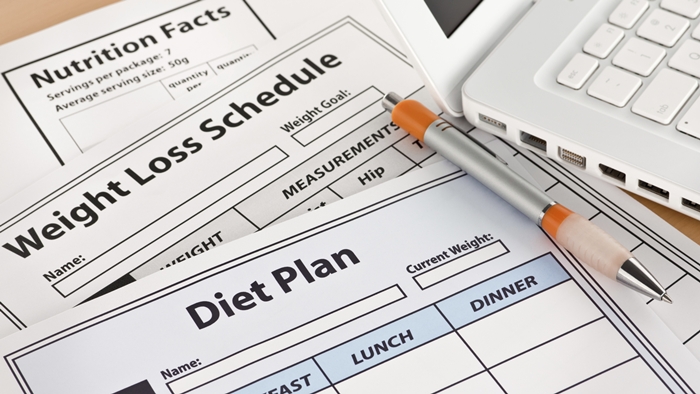
Dietitians have revealed that a 1,500-calorie diet per day is an ideal weight-loss diet for men. This has been confirmed in a study published by Harvard Health Publications, which showed that the maximum caloric intake of a person trying to lose weight should not be more than 1,500. However, it is recommended not to reduce the caloric intake below 1,200 per day. A 1,500-calorie diet for men and women is an excellent weight loss plan, especially when including essential nutrients and vitamins. It will prove beneficial in the long run as well.
Based on a healthy, 1,500-calorie diet meal plan provided by The Dietary Guidelines for Americans, a man should eat one-and-a-half cups of fresh fruits and about two cups of vegetables.
You can break the per day caloric intake into parts that equal 1,500 at the end of the day. For example, aim to intake 300 to 350 calories for breakfast, followed by a lunch of 325 to 400 calories. Squeeze in a healthy snack between meals (keep it under 250 calories), and then end the day with a slightly heavy dinner of 500 calories.
What is 1,500-Calorie Diet for Men?
A diet of 1,500 calories a day is ideal for men, and results in fast weight loss if supplemented with an exercise routine five days a week. The 1,500-calorie diet for men is an ideal diet for those between the ages of 19 and 50 with desk jobs and a sedentary lifestyle.
This diet is recommended for men who have minimal activity in their daily life, and want to lose some weight. For men with an active work schedule, the caloric intake can be slightly increased .
A weight loss of one kilogram per week with the 1,500 calorie diet is rational. In the case where the weight drops more than one kilogram per week, increase the daily caloric intake.
If it’s less than one kilogram, then cut down the caloric intake to 1,200 per day. It’s advisable not to go below 1,200 calories as it could lead to fatigue, weakness, cravings, irritability, certain deficiencies, and other health conditions.
Overview of a 1,500-Calorie Diet Menu Plan
So, what does a 1,500-calorie diet look like? For starters, ensure the diet contains all the vital nutrients your body needs. You need to have proteins in every meal. Include more vegetables and fruits, especially green leafy vegetables to get the required vitamins, minerals, and proteins.
Include whole grains for the required amount of carbs and limit the fat intake to about 30 to 40 grams a day. Also, make sure your total fiber intake comes up to at least 30 grams a day. Here is what an ideal daily diet plan should look like.
Breakfast:
The first meal of the day should be protein-rich. Include eggs, low-fat milk, low-fat yogurt, and vegetables such as spinach and broccoli. Also try eating a fruit before breakfast.
Lunch:
The second meal of the day should also include protein such as lentils or beans. Have dairy such as yogurt and leafy greens such as kale. For carbs, include brown rice or whole grain bread. Use healthy taste enhancers such as fresh or dried herbs and black pepper.
Dinner:
Again, include proteins such as eggs or chicken, with whole grain bread. Also include vegetables such as tomatoes and sprouts, and leafy greens such as lettuce or collards. Use garlic, herbs and spices, or other natural taste enhancers.
Daily totals:
Four protein foods, three fruits, four to five vegetables, two carb foods, one protein snack. There is no limit for leafy greens and natural taste enhancers.
Try making a timetable for your daily diet plan. There are several benefits to this approach. First, you know what your eating along with the quantity. Second, you can have a variety of foods spread evenly, over the week. This will satisfy hunger and ensure the diet will be followed for the long-term. This is necessary because eating the same thing everyday can be dull and boring.
Weekly Breakfast Diet Plan Sample
Try following this breakfast regime. For instance, on Mondays, have an apple and omelette with low-fat cheese and spinach for breakfast. On Tuesdays have mixed berries in low-fat yogurt and sauteed broccoli. On Wednesdays, eat apricot porridge with toasted seeds. On Thursdays, drink a nutritious smoothie of banana, strawberry, low-fat vanilla yogurt, and some cinnamon.
For something different to start the weekend, on Fridays, have veggies such as beans, tomatoes, onions, and peppers grilled with low-fat cheese and a glass of freshly-squeezed orange juice. On Saturdays, have boiled eggs and toast, along with eight to ten pieces of mixed fruits. On Sundays, indulge in a grilled chicken and low-fat mayo sandwich (whole grain bread and three to four pieces small pieces of chicken) along with a sweet lime.
This is just a sample of a weekly breakfast diet plan for the 1,500-calorie diet. Design your own diet plan for the rest of the meals. Make revisions and adjustments; however, be sure to keep the calorie count to 1,500 a day.
How a 1,500-Calorie Diet Helps to Lose Weight
Weight loss can be achieved either by eating less food or by consuming low-calorie foods. The former is not recommended due the impact it could have on health. Starving is recommended by neither doctors, nor dietitians and depriving the body and mind is certainly not a good idea.
Starving will make you weak and stuffing yourself with food will make you lethargic. The 1,500-calorie diet plan enables you to eat just the right amount of calories required by the body for daily functioning. In fact, you will feel fresh and energetic throughout the day because you are eating right and without much of a gap between two meals. Also, increased activity and an exercise regime will definitely help to achieve your weight loss goals faster.
Weight Loss at a Healthy Pace
Losing one kilogram of weight in a week is ideal. If you are losing more than that, try increasing your caloric intake but don’t cut down on your exercise. If this also does not work, consult a doctor because there could be some other underlying reason for rapid weight loss.
On the other hand, if you are not losing weight, try decreasing your caloric intake and make sure you are exercising right and for at least 30 to 40 minutes. If your weight remains unchanged, consult a doctor to rule out any other underlying reasons for not losing weight.
Benefits of a 1,500-Calorie Diet
1. Weight Loss
When the body receives the receives the exact amount of calories, it uses all the calories to generate energy. As a result, there are almost no extra calories available to deposit in the body, and thus a person tends to lose weight.
2. Weight Management
The 1,500-calorie diet is also useful to those with various ailments and medical conditions who need to manage their weight as a precaution.
3. Metabolism Boost
It is known that those with high metabolic rates have a lean body. This is because a healthy metabolism burns more calories, and if the metabolism rate is slower, then calories are retained in the body and eventually turn into fat.
So, people with a less active lifestyle or slower metabolism rate should intake fewer calories (minimum 1,500 per day) for the metabolism to use all the available calories in the body.
Remember, everyone’s body is unique, and each body will react differently to this diet. The amount of weight loss achieved with the 1,500 diet plan will also factor in age, size, activity level, and calorie intake. Incorporate a lot of fruits and vegetables to replenish the essential nutrients. Ensure adequate amounts of lean protein are included as well like steamed fish and grilled chicken. Lastly, accompany the diet with simple exercises like jogging, swimming, or cycling. This way, you will lose the weight healthily and have a trim body.
Related:
- Blood Type A Diet: Foods to Eat and Avoid
- Juice Recipes for Weight Loss: How Juice Diet Helps Weight Loss
- Green Tea Diet: Everything You Need to Know
Sources:
“1,500 CALORIES A DAY MEAL PLAN FOR MEN AND WOMEN – VEGETARIAN,” Diabetes UK web site; https://www.diabetes.org.uk/Guide-to-diabetes/Enjoy-food/Eating-with-diabetes/Meal-plans-/meal-plan-1500kcal-vegetarian/, last accessed February 7, 2017
Bowerman, S., “1500 Calorie Diet Plan Sample Menus,” Discover Good Nutrition web site;
http://www.discovergoodnutrition.com/2013/10/1500-calorie-diet-plan/, last accessed February 7, 2017














